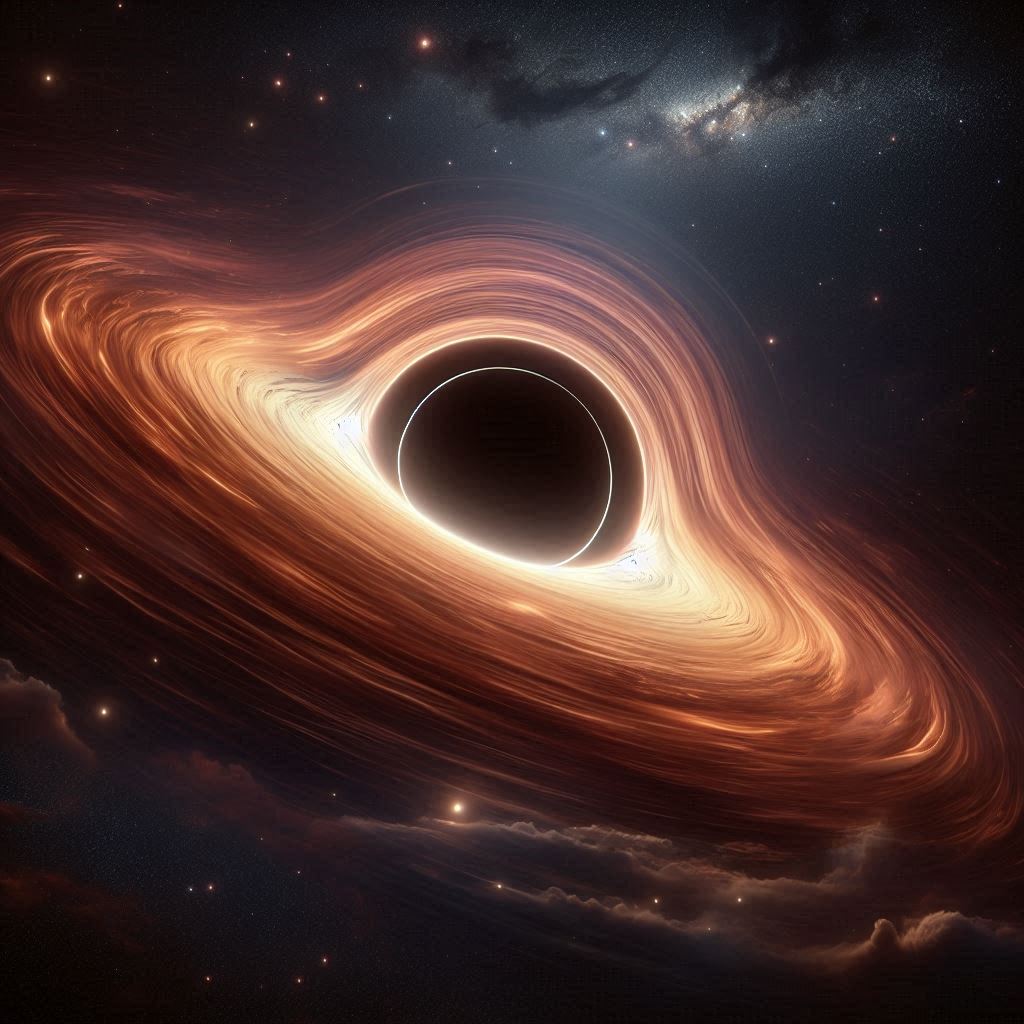Excluding clusters and galaxies, the largest single object in the universe is likely a supermassive black hole. These black holes are found at the centers of galaxies and can have masses billions of times greater than that of the Sun.
The largest known supermassive black hole is TON 618, a quasar about 10.4 billion light-years away from Earth. TON 618’s black hole has an estimated mass of 66 billion solar masses, making it one of the largest singular objects ever discovered.
What is TON 618?
TON 618 is a supermassive black hole located at the center of a quasar, a highly luminous active galactic nucleus, about 10.4 billion light-years from Earth. It’s part of a distant universe, which means that when we observe it, we are looking back in time to when the universe was much younger. TON 618 is often referred to as a “hyperluminous quasar” due to its extreme brightness.
The real awe-inspiring aspect of TON 618, however, is its size. With an estimated mass of 66 billion times the mass of the Sun, it is the most massive black hole ever detected. To put this into perspective, most supermassive black holes found in galaxies, such as the one at the center of the Milky Way, have masses in the range of a few million to a few billion solar masses. TON 618 far surpasses them all.
The Discovery of TON 618
TON 618 was first identified in 1957 during a survey of blue stars in the constellation Canes Venatici, but it wasn’t recognized as a quasar until 1970, when astronomers noted the peculiar light spectrum coming from it. Quasars emit an extraordinary amount of light, which is why they are visible across billions of light-years.
The emission from TON 618 is caused by material falling into the black hole, heating up and glowing as it spirals inward. This forms what is called an accretion disk, a structure of gas, dust, and debris swirling at immense speeds. The energy released as this material heats up produces the light we detect from quasars. TON 618’s accretion disk is so energetic that its light outshines entire galaxies, making it one of the most luminous objects in the universe.
Using the quasar’s luminosity and its distance, astronomers were able to calculate the mass of the black hole at its center. They found it to be far beyond anything previously observed—66 billion solar masses!
How Big is TON 618?
To fully grasp how massive TON 618 is, consider the following comparisons:
- Mass: TON 618 is about 66 billion times the mass of our Sun. The supermassive black hole at the center of the Milky Way, Sagittarius A*, has a mass of only 4.3 million solar masses. TON 618 dwarfs Sagittarius A* by a factor of over 15,000!
- Event Horizon: The event horizon is the boundary around a black hole from which nothing, not even light, can escape. The event horizon of TON 618 has a radius of about 1,300 astronomical units (AU), or 195 billion kilometers. For comparison, Pluto orbits the Sun at a distance of about 40 AU. This means that TON 618’s event horizon would engulf the entire Solar System 100s times over.
Why is TON 618 Important?
TON 618 is more than just a record-breaking object; it’s a critical clue to understanding the growth and evolution of black holes and galaxies. The existence of such a colossal black hole raises several important questions:
- How did it grow so large? TON 618 likely formed very early in the universe’s history, but even so, astronomers are puzzled as to how a black hole could accumulate so much mass in a relatively short time. Theories suggest that it might have started as a smaller “seed” black hole, formed from the collapse of a massive star or early galaxy, and then grew rapidly by consuming matter from its surroundings.
- What does it tell us about the early universe? Since TON 618 is located so far away, observing it allows astronomers to look back in time to when the universe was just a few billion years old. This helps researchers understand the processes that shaped the early cosmos, including how black holes and galaxies formed and evolved.
- Is there a limit to black hole size? TON 618 is pushing the boundaries of what we thought was possible for a black hole’s mass. Its discovery has led scientists to reconsider whether there is an upper limit to how large black holes can grow, or if there are even more massive black holes yet to be found.
The Mysteries Still Surrounding TON 618
While TON 618 is a marvel of modern astronomy, it also leaves us with many unanswered questions. For example, we don’t fully understand how black holes of this size interact with their surrounding environments. In some cases, supermassive black holes can regulate star formation in their host galaxies by expelling material via powerful jets. Does TON 618 influence its galaxy in a similar way? We don’t yet know, as the quasar is so far away that it’s difficult to observe the galaxy in which it resides.
Additionally, researchers are still investigating whether TON 618 is an outlier or part of a broader population of ultramassive black holes. Could there be even larger black holes lurking in the distant reaches of the universe?
Final Thoughts
TON 618 is an extraordinary cosmic object that stretches the limits of what we know about black holes and the universe itself. Its discovery not only highlights the vastness and complexity of the cosmos but also reminds us how much more there is to learn. As our telescopes and detection methods improve, we may uncover even more gargantuan black holes, further deepening our understanding of these enigmatic phenomena.
For now, TON 618 stands as a giant among giants—an unparalleled marvel in the universe’s endless expanse.
